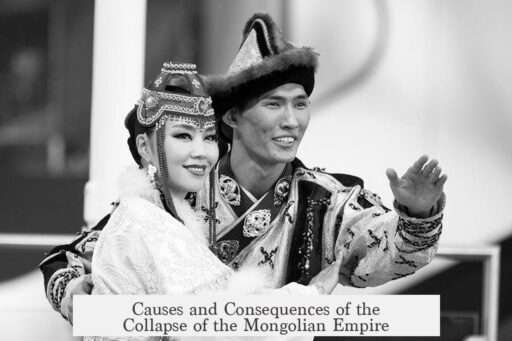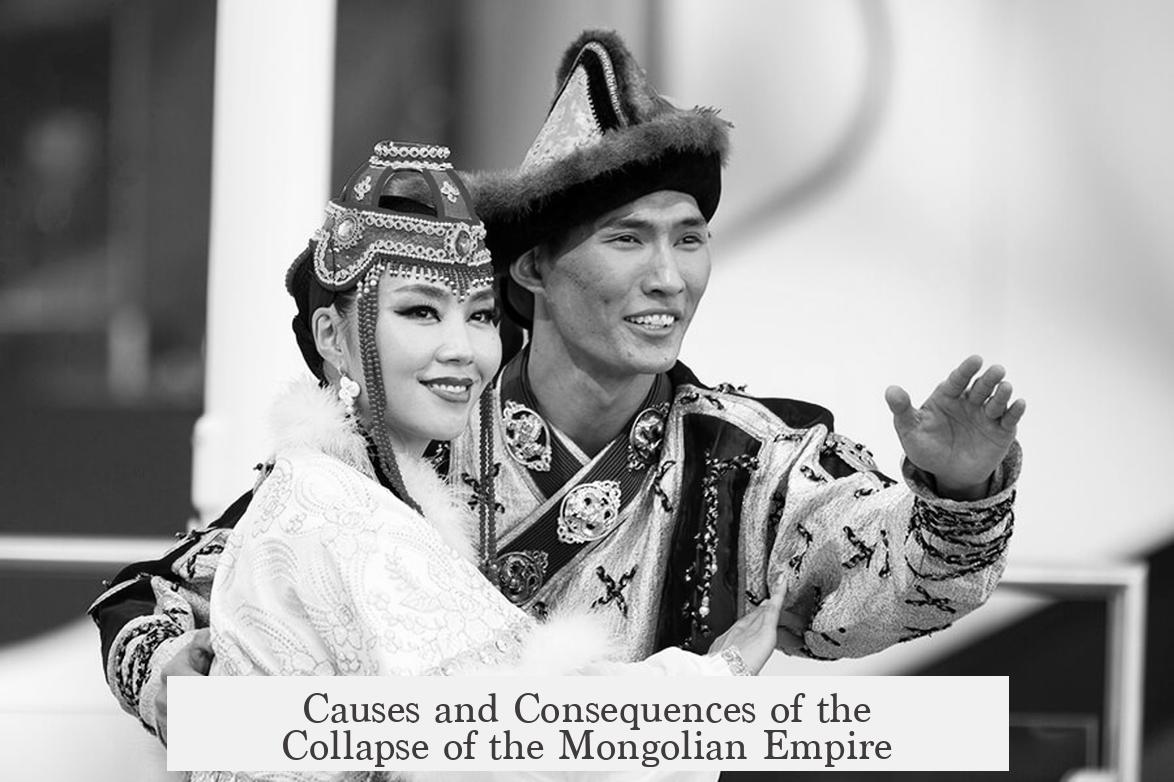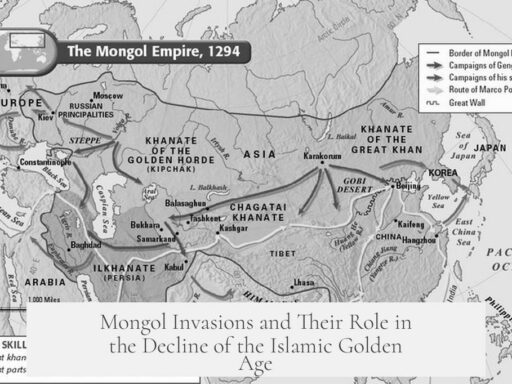The collapse of the Mongolian Empire results from its vast size, fragmentation into autonomous khanates, weakened central authority, internal conflicts, and external pressures like the Black Death and succession wars. These factors caused the empire to split into four main khanates, each following separate paths.
Following 1264, when Kublai became Great Khan, the empire effectively fragmented into four autonomous khanates. These were the Golden Horde in Russia, the Ilkhanate covering parts of Iraq and Iran, the Yuan Dynasty ruling China, and the Chagatai Khanate occupying a large but loosely defined expanse in Central Asia. While the khanates nominally recognized the Great Khan of the Yuan Dynasty, their connections were weak and fluctuated over time. For example, the Ilkhanate maintained closer ties until the century’s end.
The empire’s sheer size prevented effective centralized rule. Each khanate governed massive territories requiring strong bureaucracies and tight central control, which the Mongols struggled to establish. The Mongol rulers failed to create sustainable, corruption-resistant administrative systems. Regional governors and warlords gained power and autonomy, which disturbed local populations and undermined central authority.
The Great Khan’s ability and interest to impose authority decreased over time. Emperors concentrated on pleasures in Khanbalik and Shangdu, neglecting governance. Local rulers expanded their power, often antagonizing populations with little loyalty to Mongol rulers. Succession disputes and civil wars added instability. The Black Death spread along Mongol trade routes, worsening the empire’s conditions and weakening military and economic support.
| Khanate | Collapse Details |
|---|---|
| Ilkhanate | Collapsed in the 1330s after the last Ilkhan died without an heir. Territory fragmented among Turko-Mongol warlords before Timur conquered the region. |
| Yuan Dynasty | Pushed out of China in 1368. The ruling Mongol elite established the Northern Yuan in Mongolia, continuing intermittent threats to the Ming Dynasty. Chinggisid Khans became figureheads. Mongols later became Qing vassals in the 17th century. |
| Golden Horde | Maintained stability longer due to a power base in the Volga steppe. Succession struggles and the Black Death weakened it by mid-14th century. Defeat at the 1380 Battle of Kulikovo Pole by Russians marked decline. Timur’s invasions further fragmented it. The Tatars lost control over Russians by the late 15th century. The Crimean Khanate survived until conquered by Catherine the Great in the 18th century. |
| Chagatai Khanate | Immediately fractured as warlords competed for control. Timur took much territory but his empire fragmented soon after. Eastern areas became known as Moghulistan but had little Mongolian identity by then. |
Timur, a Turko-Mongol leader with debated ethnic origins, rose to power by conquering much of the Ilkhanate and Chagatai territories. He engaged in Golden Horde politics, leading to conflict and invasions that severely weakened the Horde. After Timur’s death, no unifying successor state emerged. Various steppe nomads, including Uzbeks and Kazakhs, became regional powers.
Babur, a descendant of both Timur and Genghis Khan, founded the Mughal Empire in India. His lineage embodied the legacy of Turko-Mongol conquest but evolved culturally, becoming heavily Persianized by his grandson Akbar’s time.
The Mongol nomadic rule declined as their descendants lost political power. The once-dominant steppe powers shifted focus toward trading cities rather than purely nomadic military control. The Dzungar Khanate, while ethnically Mongolian, was not a direct successor of the earlier Mongol empire. The legacy of Genghis Khan persisted, serving as a symbol of legitimacy. Timur employed Chinggisid figureheads to bolster his rule. The last Chinggisid princes eventually became minor emirs, ending their political relevance around the First World War.
- The Mongol Empire fragmented into four autonomous khanates that weakly acknowledged the Great Khan.
- Central authority weakened due to size, ineffective bureaucracy, and loss of ruler interest.
- Internal strife, succession wars, and the Black Death destabilized the empire.
- The Ilkhanate, Yuan Dynasty, Golden Horde, and Chagatai Khanate each collapsed or evolved independently.
- Timur’s conquests further fragmented Mongol successor states and influenced regional politics.
- Mongol power gave way to mixed cultural states, but Genghis Khan’s legacy remained important for legitimacy.




